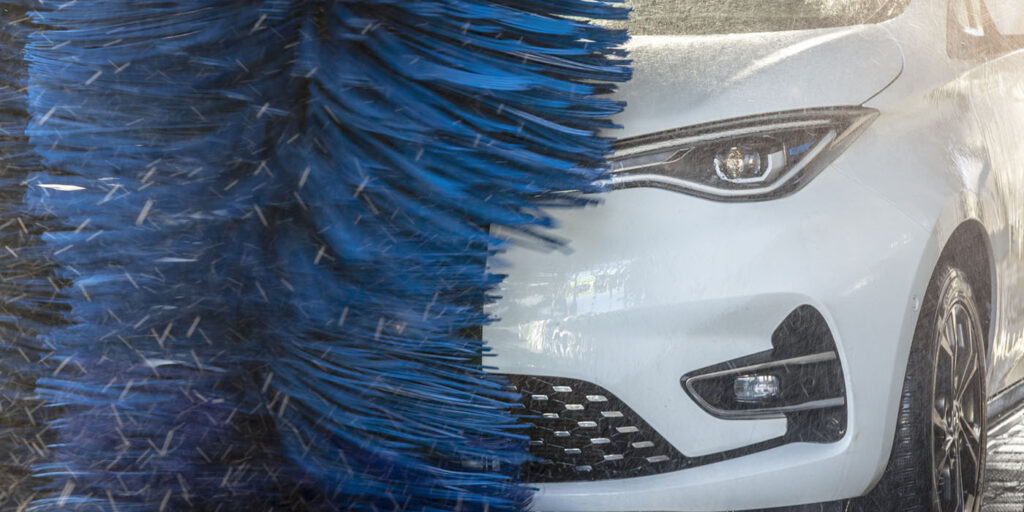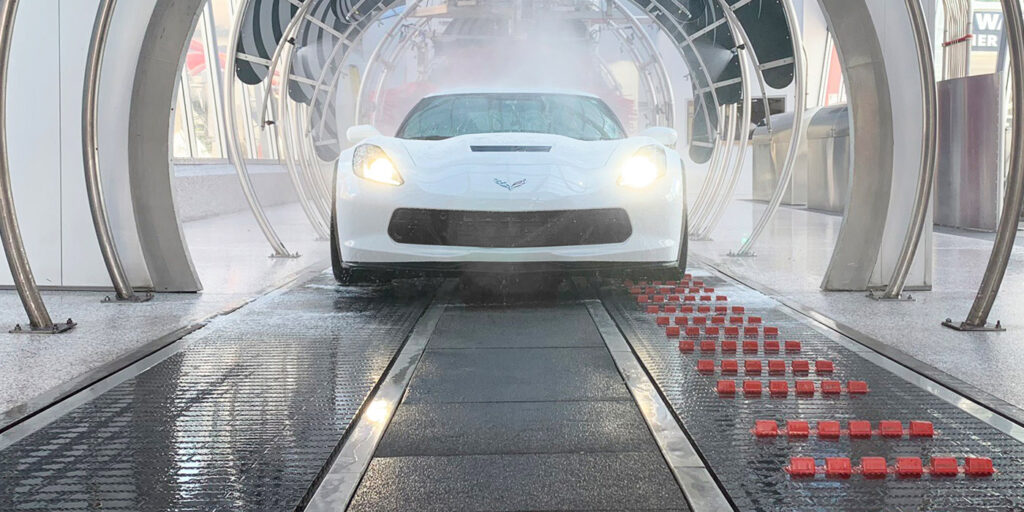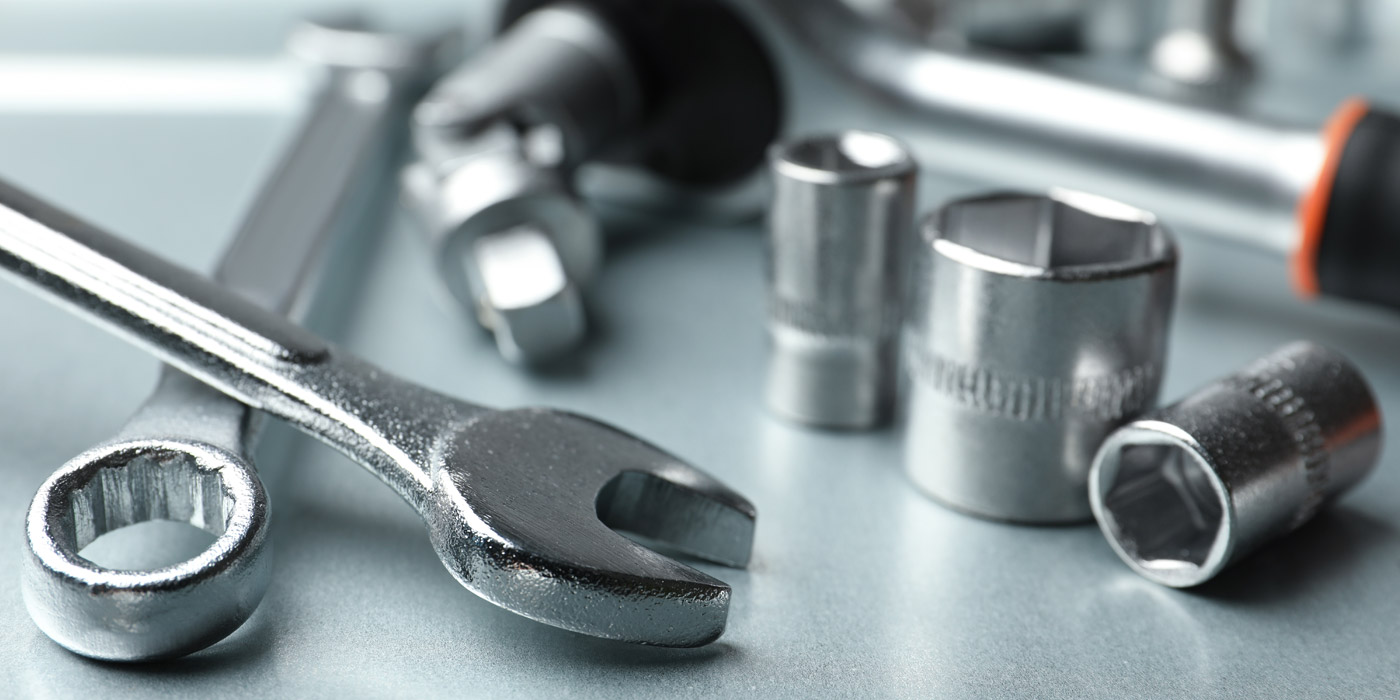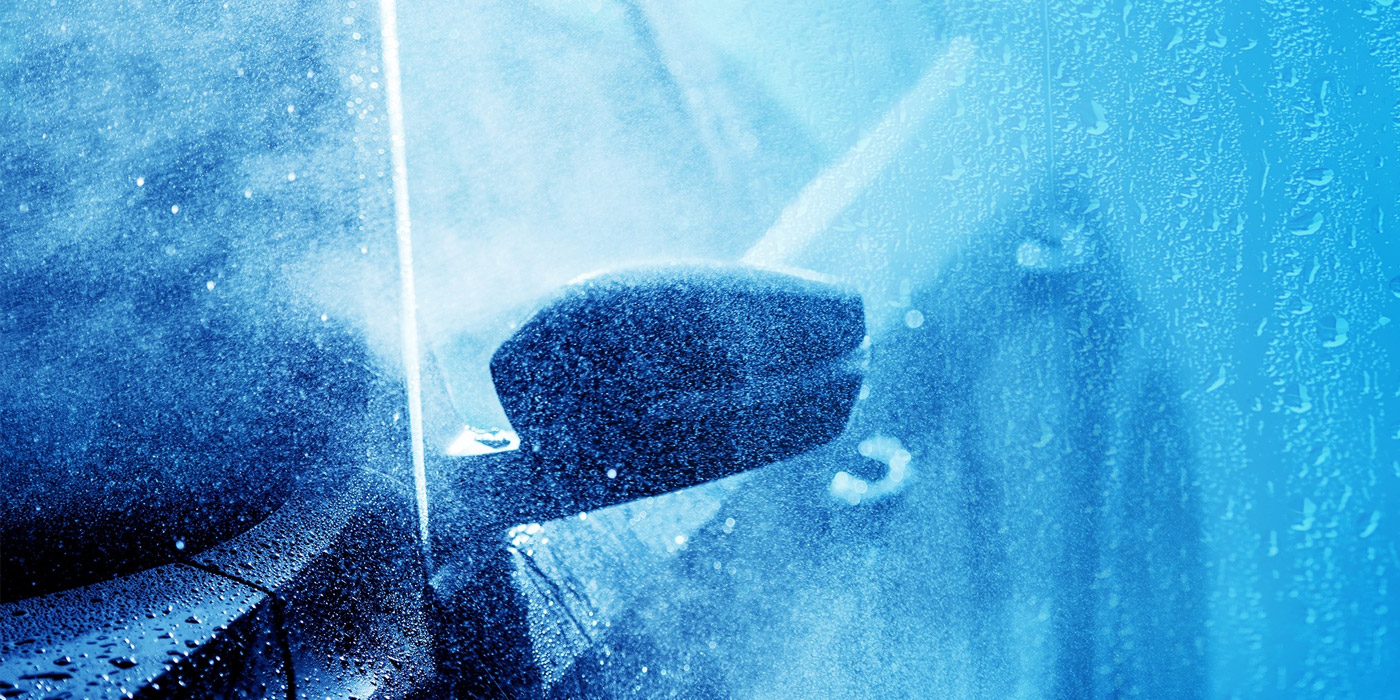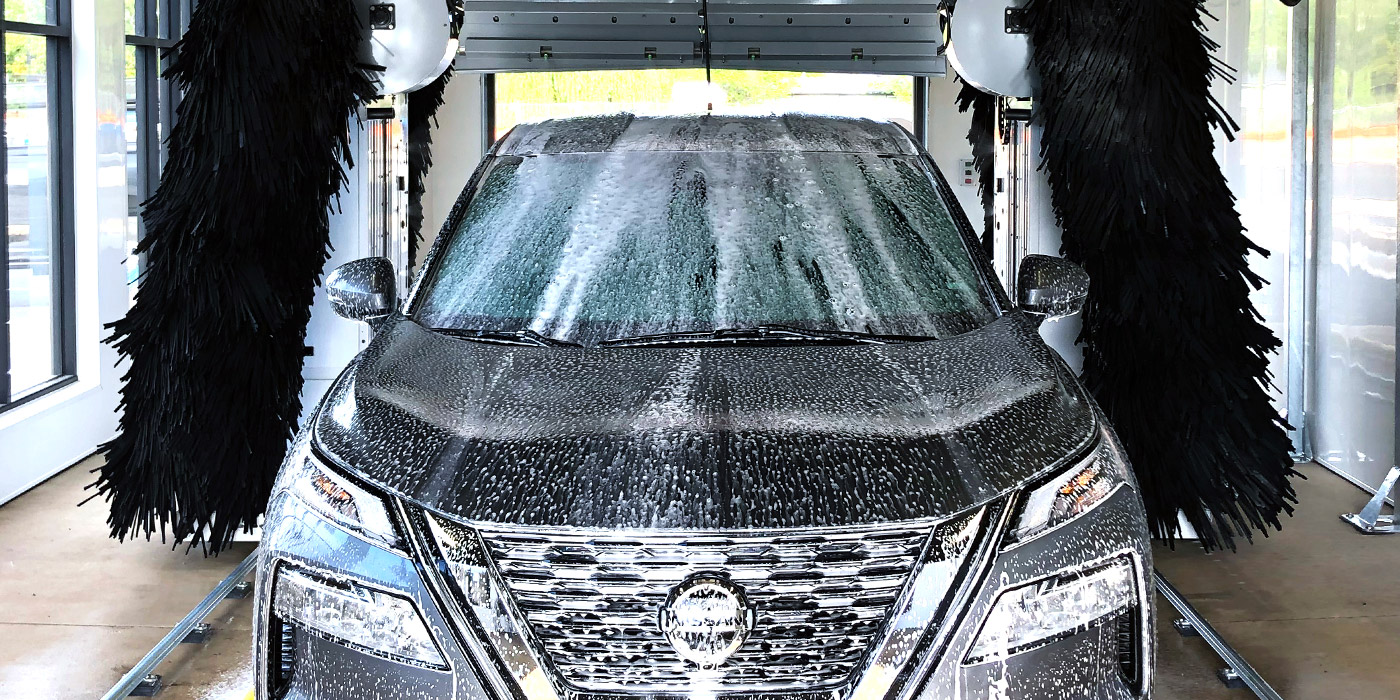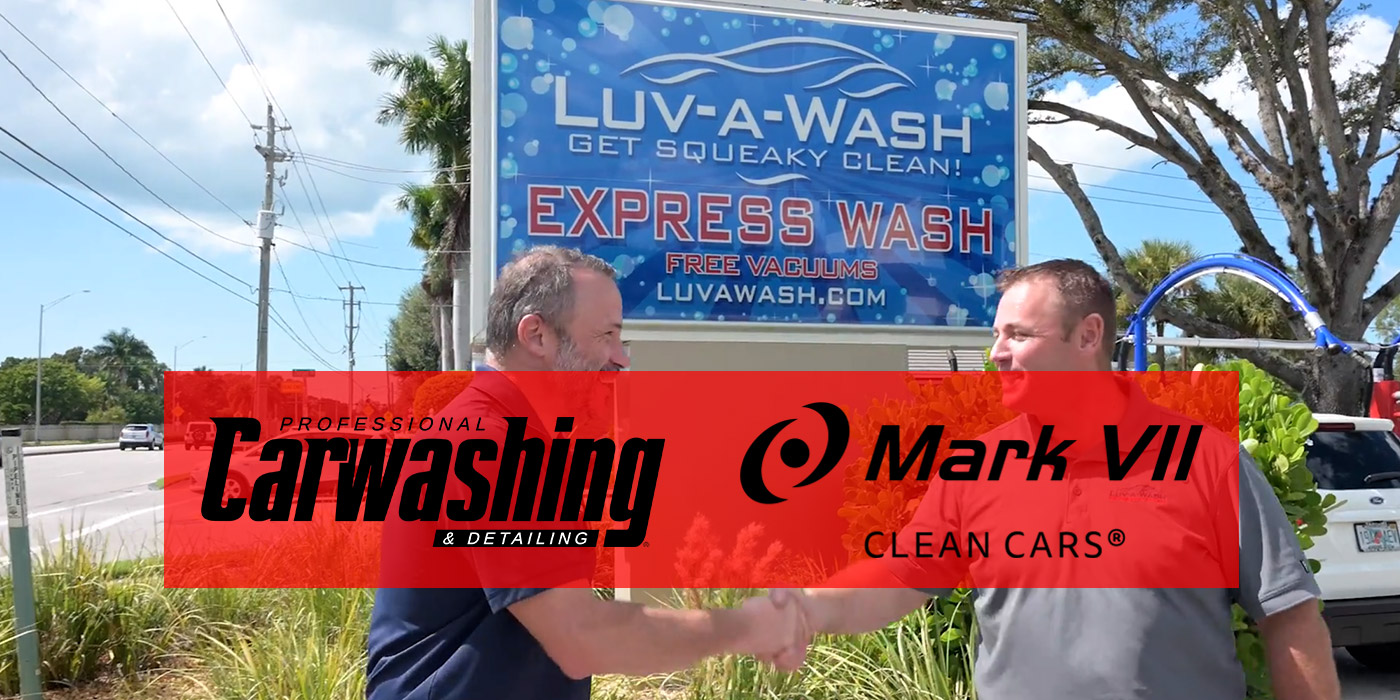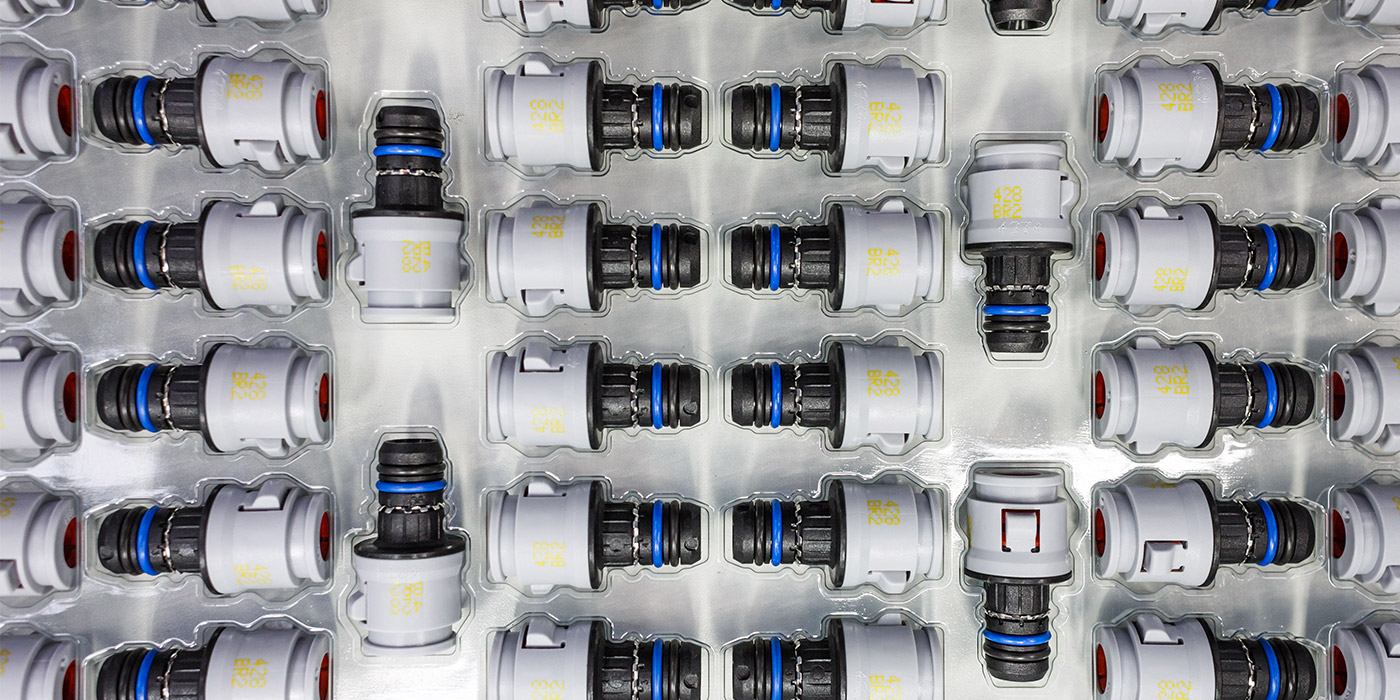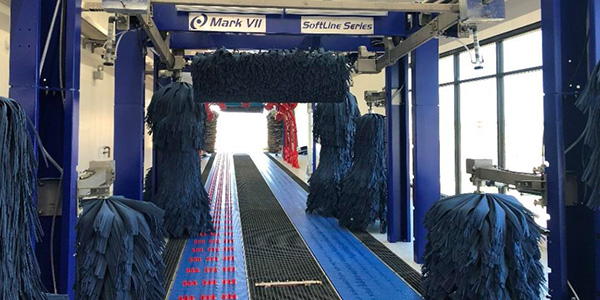In tunnel carwash systems using a conveyor to control the wash speed, there are many different materials, configurations and options available. However, cloth and foam brushes and hangdowns offer some advantages over touchless washes.
While touchless washes use high-pressure water and chemicals, the process takes longer for a thorough cleaning and often has trouble removing heavy mud or dirt, bugs and road grime from vehicles. Also, unsuitable chemical ratios can stain paint if not monitored.
Instead, when vehicles pass through multiple soft cloth curtains or rotating gentle foam brushes, the process cleans faster and more thoroughly, which enhances revenue. Soft friction lifts dirt, droppings, bugs, grime, etc., from the vehicle’s surface. It also cleans problem areas, such as rocker panels, the vehicle’s rear and license plates.
So, to help tunnel wash operators get the most out of their investments, this article will focus on some strategies that serve to optimize the use of cloth and foam both in terms of performance and replacement.
Choosing cloth, foam or both
Both cloth and foam brushes and hangdowns have an important role in tunnel wash operations. However, each material has some pros and cons. So, it is essential to review such factors as tunnel length and potential vehicle damage to know when it is best to use each or both.
Tunnel length
“Because cloth is heavier and denser, it will remove more dirt and clean better in less space,” says Robert Pecora, president of Erie Brush. “So, if you run a short, 50- or 60-foot tunnel with one set of wraps, one curtain and a couple of side brushes, you will need to use cloth.”
Related: Determining the right tunnel length
According to Pecora, utilizing foam is fine for longer tunnel washes with more equipment. “If you operate a longer tunnel — on the order of 100 or more feet — with two or three sets of wraps, the foam has enough time to sufficiently clean the vehicle’s surfaces,” he says.
Pecora notes that with foam, you do need more chemicals to provide more cleaning and lubrication than with cloth. This can raise operational costs.
Reducing damage
Rotating foam brushes are gentler on the vehicle than cloth, reducing the risk of car damage, particularly around such problem areas as antennas, mirrors or license plates. Foam can also be lighter on wash equipment than heavier cloth. This tends to extend the equipment’s usable life.
Choosing both
Since both cloth and foam have pros and cons in certain circumstances, many tunnel wash operators choose to utilize both.
“On the top half of vehicles, many operators use foam to safeguard wipers, mirrors and antennas,” says Pecora. “Then, on the bottom half, they often use cloth to better clean rocker panels, tires and wheels, where heavier dirty deposits typically exist.”
Maximizing performance
For tunnel wash operators, cleaning ability is the most important attribute to consider.
Cloth
When utilizing cloth for general surface cleaning, non-woven fabrics, such as polyester and polypropylene, strike a balance of absorbing sufficient water/soap solution to clean without getting too heavy. The inherent stiffness of polypropylene, however, sometimes prevents its access to small nooks and crannies, such as those around trim pieces.
Another option is a plusher material, such as “cashmere-style” cloth, which takes advantage of a nappy surface (like the pile on a rug) to do a better overall cleaning job on the vehicle, including windshields. The pile length on this type of material ranges from 0.25 inches to 1 inch, with longer pile capable of reaching deeper into crevices and providing more overall surface area for cleaning.
Pecora indicates that tunnel wash owners can install fewer pieces of cashmere than they would with cloth. “Some owners go overboard and use too much cashmere, which soaks up water and can become quite heavy,” says Pecora. “Cashmere typically still cleans better than twice as many pieces of cloth.”
When it comes to durability, operators want their material to last a long time. However, it is important to strike a balance between getting your money’s worth and jeopardizing the finish on customers’ cars.
Some tunnel wash operators want the toughest cloths possible, so that they do not have to order new ones for a long time. However, tough cloth does not clean as well as soft cloth, since it does not reach into tight spaces and is harsher on vehicle surfaces.
Pecora notes that the slit size on cloth hangdowns also makes a difference in performance.
“On hangdowns, the wider slits last longer but don’t clean as well as the thinner slits, which reach into nooks and crannies better,” he says. “So, it’s a good idea to go with thinner slits, if you can. But rather than hold onto materials until they become ragged or no longer clean well, it is best to periodically change them out.”
Rotating foam brushes
When it comes to getting the most out of rotating foam brushes in the tunnel wash, switching to a new category of high-quality “gentle foam” can often yield better results. Even within this category, the foam utilized is not all equal — some options are denser and are consequently more durable.
The softer foam is also so quiet that customers riding along inside their vehicles essentially cannot hear it, so they know the wash is gentle on their vehicles.
“When engineered properly and used with enough soap and water, fans of gentle foam feel that it has the softest touch, that it cleans and polishes for a better shine and that it outlasts other materials,” explains Pecora.
According to Pecora, the highest-quality foam offers a range of softness, density and thickness to optimize its use in tunnel washes. “For instance, softer, thinner foam spun at lower RPMs is better for the sides. For rocker panels, the foam can be stiffer and thicker to prevent going inside pickup truck wheel wells, which can beat up thinner foams.”
According to Pecora, slightly thicker foam also works well in horizontal shaft top brushes, reaching into the nooks and crannies at the bottom and top of the windshield where trim goes around.
When and how to replace
Dennis O’Connell is president of Hoffman Services, a company that builds and remodels carwashes in the greater Chicago area.
“In our business, the majority of what we sell or replace in tunnel washes is cloth. However, we have customers who use foam at the door handle and above and cloth below, where it is a little harder to clean,” says O’Connell.
According to O’Connell, to maximize cleaning efficiency as well as ROI, tunnel wash operators often want to know when the best time is to replace their cloth hangdown curtains and rotating brush cores.
“We have some rules of thumb about how often the cloth and core need to be replaced. It has more to do with how many cars you have washed rather than how old it is,” he says. “But you can look at the cloth and usually tell when it is time to change it. If everything is in good shape but some cloth pieces have ripped off, you can buy some replacement cloth and use it as needed.”
When it comes to a professional tunnel carwash remodel, Pecora explains, “Often, the first thing that gets replaced in a remodel is the cloth and core, because it is very noticeable. Changing out the cloth is one of the easiest ways to spruce up the look of your carwash.”
To minimize the time, labor and cost of changing out cloth and core, O’Connell offers some pointers.
“When ordering replacement brushes, order the brush, cloth and core, and install it all at the same time, because it is easier. If you are replacing the cloth, your core is probably aged too. If you replace the core later, you will have to take the cloth off strand by strand, replace the core and then put the cloth back on,” says O’Connell.
In cases where the tunnel wash operator is replacing cloth and core with a different brand than the OEM, O’Connell has some advice.
“Sometimes these are very old units, so you need a brush manufacturer who really knows the product, the equipment and how it fits; who makes it simple to order; and [who] is willing to help,” O’Connell explains.
While operators of conveyor washes have many options available to them today, the use of cloth and foam are the most popular in the market for good reason.
In the end, when looking to get the most out of your operation using cloth or foam, consulting with experts and following a few simple strategies can go a long way toward enhancing the wash, keeping customers happy and increasing profits.
Del Williams is a technical writer based in Torrance, California.

